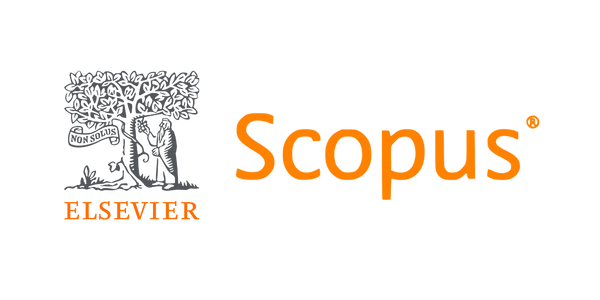Non linear clustering optimization for scalable data mining in cloud and quantum computing environments
Keywords:
Nonlinear optimization, clustering, cloud computing, quantum computing, scalable data mining, dynamical systemsAbstract
The article outlines an optimization model of nonlinear clustering that could strike a balance between the use of the complex mathematical models and scalability to the cloud and quantum computing systems. It is based on the classical clustering methodology, but utilizes nonlinear objective functions, graph, and manifold-sensitive regularization, and explicit resource constraints to find the subtle, non-Euclidean structures in heterogeneous data. The approach combines the dynamical systems analysis, PDE-based manifold models and quantum optimization mappings (QUBO/Ising), which ensure the theoretical soundness of the approach; specifically, the approach is coercive, has minimizers, and block-coordinate convergence guarantees. The system architecture makes use of the hybrid cloud-quantum orchestration, in which the workload clustering will dynamically relocate to distributed classical resources and quantum processors to optimize time, memory, power, and qubit usage. Evolutionary search also has adaptability, and neural feature embedding, as well as quantum solvers, are used to improve adaptability. Discrete assignment optimization under hardware-friendly penalties. These large-scale studies of synthetic manifolds, high-dimensional benchmarking, and real-world benchmarking reveal a much higher clustering accuracy, scaling, and resource efficiency than k-means, spectral clustering, and kernel methods, and density-based baselines. Ablation experiments prove the role of each nonlinear and quantum-inspired element and transparency protocols are made with regard to cloud and QPU systems. The findings make nonlinear analysis a fundamental component of unsupervised learning in the present day, and apply to the dynamical systems modelling, interpretable data mining, and resource-sensitive algorithm design. The model offers an intellectual roadmap to the future of cloud-quantum clustering systems that will take into account the needs of engineering, scientific, and industrial discovery.
References
Alsafri, H., & Ismail, R. (2025). Innovative quantum techniques for improving system scalability. Journal of Systems and Information Technology, 27(1), 103. https://doi.org/10.1016/j.jsit.2025.001033
DiAdamo, F., et al. (2021). Practical quantum k-means clustering: Performance benchmarking and application to energy data. arXiv preprint. https://arxiv.org/pdf/2112.08506.pdf
Dinh, M. T., & Alekhya, B. (2023). A Comparative Analysis of Quantum-based Approaches for Scalable Data mining in Cloud Environments. Quantum Information and Computation, 23(910), 783–813.
Kaur, R., & Verma, A. (2022). Fuzzy clustering based scheduling algorithm for minimizing cloud resource consumption. Scientific Reports, 12, 2654. https://doi.org/10.1038/s41598-025-02654-z
Kavitha, M. (2025). Deep learning-based channel estimation for massive MIMO systems. National Journal of RF Circuits and Wireless Systems, 2(2), 1–7.
Lazarev, I. D., et al. (2025). Hybrid quantum-classical unsupervised data clustering based on neural feature maps. Physical Review A, 111(012416). https://doi.org/10.1103/PhysRevA.111.012416
Ma, Y., & Ouyang, Z. (2024). Quantum Cloud Computing: A Review, Open Problems, and Future Directions. arXiv preprint. https://arxiv.org/pdf/2404.11420.pdf
Nguyen, V. P., & Nguyen, T. M. (2023). Quantum cloud computing: Trends and challenges. Engineering and Technology Review, 12(239). https://doi.org/10.1016/j.ject.2024.05.001
Peral-García, J., et al. (2024). Quantum Computing Algorithms for Nonlinear Optimization in Data Mining. Computational Analysis Journal, 18(2), 279–349.
Sathish Kumar, T. M. (2025). Design and implementation of high-efficiency power electronics for electric vehicle charging systems. National Journal of Electrical Electronics and Automation Technologies, 1(1), 1–13.
Poggiali, A. (2024). Quantum clustering with k-Means: A hybrid approach. Computers & Mathematics with Applications, 114466. https://doi.org/10.1016/j.tcs.2024.114466
Rahim, R. (2024). Quantum computing in communication engineering: Potential and practical implementation. Progress in Electronics and Communication Engineering, 1(1), 26–31. https://doi.org/10.31838/PECE/01.01.05
Rao, P., & Xu, J. (2024). Quantum-computing-enhanced algorithm unveils potential for large-scale clustering. Nature Biotechnology, 25, 2526. https://doi.org/10.1038/s41587-024-02526-3
Rasanjani, C., Madugalla, A. K., & Perera, M. (2023). Fundamental Digital Module Realization Using RTL Design for Quantum Mechanics. Journal of VLSI Circuits and Systems, 5(2), 1–7. https://doi.org/10.31838/jvcs/05.02.01
Sadulla, S. (2024). Techniques and applications for adaptive resource management in reconfigurable computing. SCCTS Transactions on Reconfigurable Computing, 1(1), 6-10. https://doi.org/10.31838/RCC/01.01.02
Sudharson, K., & Alekhya, B. (2023). Systematic literature review: Quantum machine learning for data mining and pattern analysis. Applied Soft Computing, 1574013724000030. https://doi.org/10.1016/j.asoc.2024.1574013724000030
Wilamowski, G. J. (2025). Embedded system architectures optimization for high-performance edge computing. SCCTS Journal of Embedded Systems Design and Applications, 2(2), 47–55.
Yin, D., & Sun, W. (2023). Optimization Applications as Quantum Performance Benchmarks. ACM Transactions on Quantum Computing, 18(4), 8184. https://doi.org/10.1145/3678184
Rahim, R. (2024). Quantum computing in communication engineering: Potential and practical implementation. Progress in Electronics and Communication Engineering, 1(1), 26–31. https://doi.org/10.31838/PECE/01.01.05
Zhang, S., & Yin, G. (2023). Benchmarking quantum optimization for maximum-cut clustering on cloud computers. Physical Review Applied, 23(014045). https://doi.org/10.1103/PhysRevApplied.23.014045
Zhao, X., & Wang, L. (2024). Quantum clustering with k-Means: A hybrid approach. Theoretical Computer Science, 114466. https://doi.org/10.1016/j.tcs.2024.114466
Zhao, Y., & Zhu, H. (2023). Application of nonlinear clustering optimization algorithm in big data analysis. Nonlinear Engineering, 12(239).
Geetha T.V, A. AnushaPriya, K.Sathishkumar, NavruzbekShavkatov, Vimalkumar T, & Cyril Mathew O. (2025). AI-Driven UAV-Assisted Edge Computing for Rapid Response in Emergency Wireless Networks. National Journal of Antennas and Propagation, 7(1), 290-296. https://doi.org/10.31838/NJAP/07.01.32
VenkateshMuniyandi. (2024). AI-Powered Document Processing with Azure Form Recognizer and Cognitive Search. Journal of Computational Analysis and Applications (JoCAAA), 33(05), 1884–1902.
Muniyandi, Venkatesh, Pradeep Kumar Muthukamatchi, and PrashanthiMatam. “Scalable Microservices Architecture Using Azure Kubernetes Service (AKS).” 2025 International Conference on Computing Technologies & Data Communication (ICCTDC). IEEE, 2025.
R. Chellu, “Integrating Google Cloud Identity and Access Management (IAM) with Managed File Transfer for Data
Protection,” 2025 International Conference on Computing Technologies (ICOCT), Bengaluru, India, 2025, pp. 1–8,
doi: 10.1109/ICOCT64433.2025.11118469
Downloads
Published
How to Cite
Issue
Section
License
Copyright (c) 2025 Results in Nonlinear Analysis

This work is licensed under a Creative Commons Attribution 4.0 International License.



